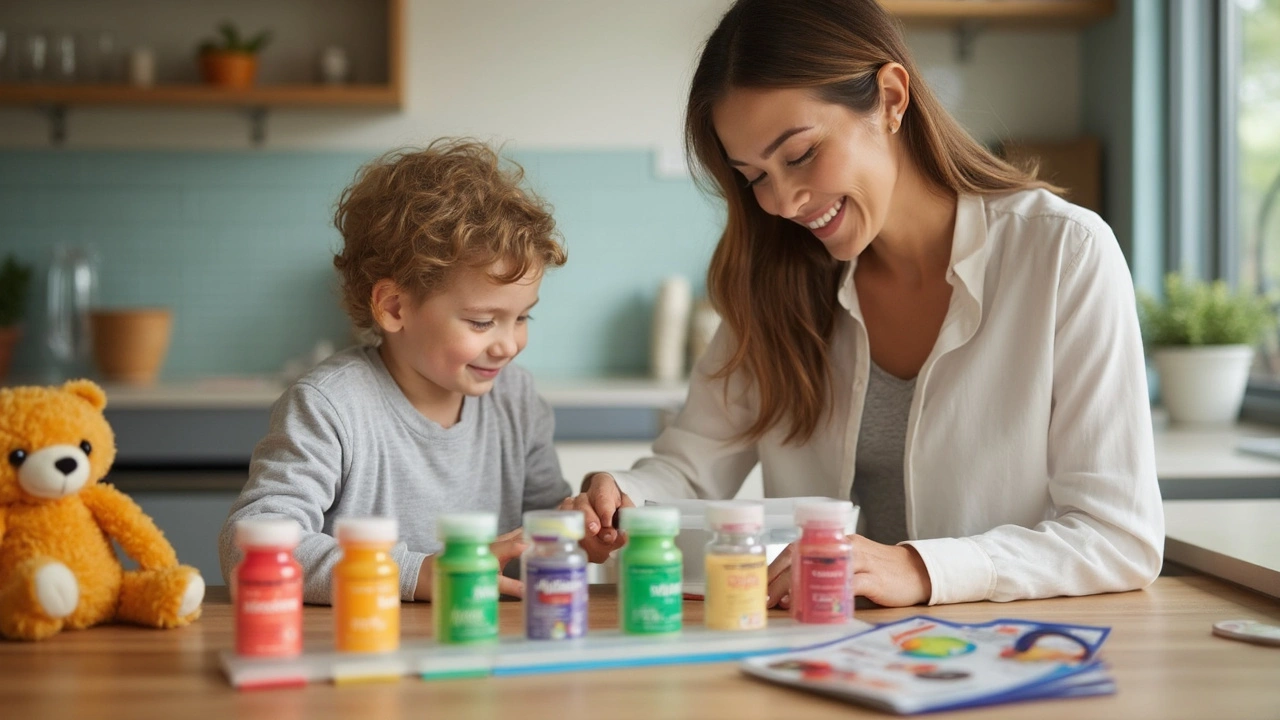Suspension Antibiotics for Kids: What Parents Need to Know
If your child needs an antibiotic, chances are the doctor will prescribe a liquid form. These suspensions are designed for little mouths and make sure the medicine spreads evenly in the bottle. But they also bring questions – how much is right, how often, and what side effects to expect.
Choosing the Right Suspension
First off, not every antibiotic comes as a suspension. Common ones include amoxicillin, azithromycin, and cefdinir. Look at the label: it should list the strength (like 250 mg/5 mL) so you can calculate the exact dose for your child’s weight.
Ask the pharmacist if the flavor is kid‑friendly – strawberry or bubble‑gum are popular choices that help with compliance. If the taste bothers them, you can mix a small amount of juice after measuring the dose, but never stir the whole bottle; it could change the concentration.
Giving the Medicine Correctly
The trickiest part is getting the right amount into your child’s belly. Use the dropper or syringe that comes with the medication – a kitchen spoon isn’t accurate enough. Fill it to the line, then place it on the side of the mouth and let the liquid flow slowly.
Timing matters too. Some antibiotics work best when taken every 12 hours, others every 8. Set an alarm on your phone so you don’t miss a dose. If you’re late, give the missed dose as soon as you remember unless it’s almost time for the next one – then skip the missed one and continue on schedule.
Watch for side effects. Mild stomach upset is normal, but if your child has a rash, trouble breathing, or severe diarrhea, call the doctor right away. Keeping a short log of when you give each dose can help spot patterns and show the doctor what’s happening.
Storage is another simple step that saves money. Most suspensions need refrigeration after mixing; check the bottle for “store at 2‑8 °C.” Shake the bottle well before each use – the medicine can settle, and you’ll end up giving less than intended if you don’t.
Finally, finish the entire course. Even if your child feels better after a few days, stopping early lets bacteria survive and become resistant. That’s why doctors stress completing the full prescription.
By picking the right suspension, measuring accurately, and staying on schedule, you’ll give your kid the best chance to bounce back quickly. Have more questions? Talk to your pharmacist – they’re a great resource for dosing tricks and flavor tips that make medicine time smoother for everyone.
Finding delicious and effective pediatric cephalexin alternatives for skin infections doesn't have to be a nightmare for parents. This article breaks down the best palatable suspensions and chewable options available in Australia, explains how these choices compare with cephalexin, and tips for making medicine time less stressful for everyone. Discover proven antibiotic options, what to watch for, and helpful tricks straight from Melbourne caregivers and pharmacists.


 Medications
Medications